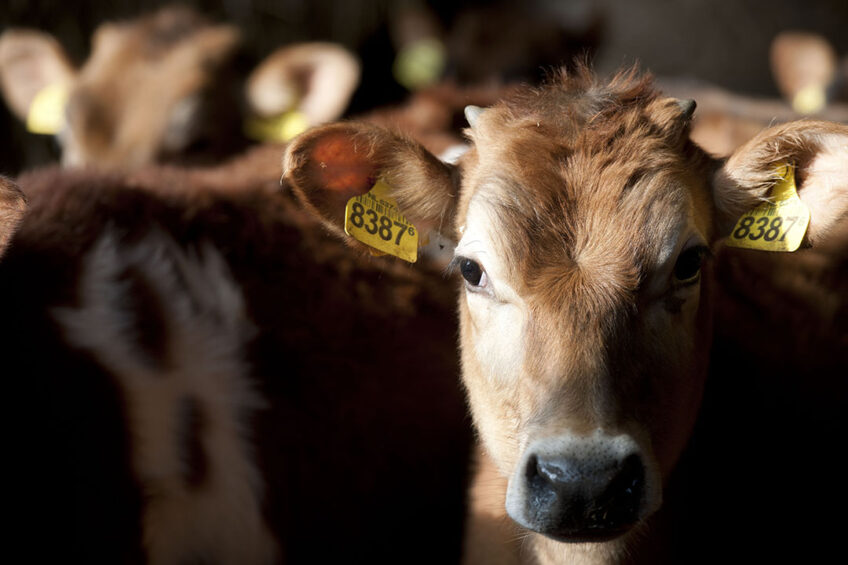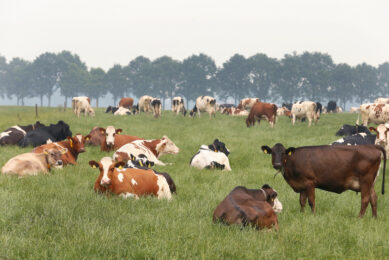Methane mitigation: Understanding the rumen microbiome

Several CH4 mitigation approaches have been investigated, but results have been inconsistent, which may be partially attributed to a lack of understanding of the mechanistic basis of methanogenesis and the effect of inhibitors on individual methanogenic lineages and other fermenting microbes in the rumen.
Besides methane being an environmental issue, CH4 formation leads to a gross energy loss for the ruminant host. In this study, researchers from the University of Pennsylvania addressed critical knowledge gaps underlying methanogen diversity and its link to CH4 formation, formation of specific bacteria-archaeal cohorts, and how H2 production and utilisation are regulated between these cohorts during normal and inhibited methanogenesis.
“Addressing these knowledge gaps has the potential to lead to the development of novel strategies or to complement existing strategies to effectively reduce CH4 formation while also improving productivity in dairy cows,” they said.
Significance of the rumen microbiome
Dairy cows are dependent on rumen microbes to derive their energy and protein needs from the microbial fermentation of feeds. The rumen microbiome is predominated by anaerobic bacteria, followed by less abundant archaea (methanogens, protozoa, and fungi) that work collectively to digest feed. As fermentation increases following feed intake, VFA and gases (CO2 and H2) are produced. The VFAs are absorbed by the host as sources of energy but most of the H2 is used by methanogenic archaea to reduce CO2 leading to the formation of CH4.
It has been postulated that individual methanogenic lineages form specific syntrophic (obligate metabolic mutualism) with certain cohorts of bacteria in the rumen and differences in these bacteria-archaea interactions may be linked to ruminant health and production. Understanding the different types of methanogens, how they interact with other microbes and their role in methanogenesis may enable the unveiling of mitigation strategies that can effectively reduce CH4 formation without disturbing the ruminal environment.
Methanogenic diversity in the rumen
Methanogenic archaea are an ecologically diverse group of strictly anaerobic microorganisms with a distinct energy metabolism that results in the formation of CH4 through different pathways that include the reduction of CO2, formate, methanol, methylamines, and the cleavage of acetate. The advent of PCR has enabled the identification of specific marker genes such as 16S rRNA and mcrA (α subunit of MCR) that are conserved among methanogens. Using either the 16S rRNA gene or terminal-RFLP of the mcrA gene, ruminal methanogens have been broadly clustered into 3 distinct genera: Methanobrevibacter, Methanosphaera, and Methanomassiliicoccales in dairy cows.
Notably, studies show that RNA-based approaches such as meta-transcriptomics are more discriminatory than those of DNA-based approaches such as metagenomics and that CH4 formation is tightly linked to microbial gene expression. The researchers stated that although the use of marker genes combined with total and metabolically active components has provided new insights on the composition of individual methanogenic lineages in the rumen, better characterization of these lineages to the species level and a better understanding of their role in total CH4 formation across multiple ruminant species are needed to fully understand methanogenesis in the rumen.
Hydrogen metabolism under normal and inhibited methanogenesis
In the rumen, feed fermentation represents a series of oxidation and reduction reactions involving the production and transfer of H2 within and between microbes to allow re-oxidisation of reduced co-factors and prevent interruptions in microbial fermentation.
Therefore, understanding the production and utilisation of H2 via determination of the distribution and role of hydrogenases under normal and modulated conditions such as inhibited methanogenesis will be pivotal to spare H2 from forming CH4 and redirect that H2 to alternate sinks that lead to significant improvements in energy efficiency in the rumen. For example, some studies show that H2 spared from forming CH4 is redirected to alternate sinks such as butyrate-producing bacteria.
Ruminal methanogenesis pathways
Despite the common product, individual methanogens have distinct physiological and metabolic capabilities for their survival including substrate utilisation, H2 thresholds, responses to the partial pressure of H2, and structural differences. According to the researchers, several methanogenesis pathways use different substrates among methanogens. Knowledge of possible pathways to CH4 formation may enable the identification of new targets to inhibit CH4 formation or alter feeding strategies to reduce the supply of methanogenic substrates in the rumen.
Some of the pathways stated (as retrieved from the Kyoto Encyclopedia of Genes and Genomes databases and genomes of individual methanogens) are as follows:
- Acetoclastic pathway
- Glycine pathway
- CO2 + H2 pathway
- GTP pathway
- Methanol pathway
- Methyl amines pathway
- Phosphonate pathway
In addition to the different methanogenesis pathways, the researchers highlighted that there is constant interaction between bacteria, protozoa, fungi, and methanogenic archaea resulting in the exchange of metabolites such as H2. A better understanding of these interactions may help to select cows with a natural tendency for higher ruminal efficiency. They stated that differences in microbial cohorts between high and low CH4-yield phenotypes among ruminant hosts may be linked to several factors including, but not limited to, rumen size, passage rate, rumination, and VFA absorption.
Global approach for better mitigation strategies
Researchers believe that, on a global scale, focusing on the effect of different mitigation strategies such as feed supplements (including lipids, essential oils, tannins, and monensin), vaccines, and microbial modulators across different dietary and management styles and breeds on the rumen microbiome may enable a better understanding of ruminal methanogenesis.
They stated the importance of global research to identify factors that drive methanogen diversity to come up with better mitigation strategies to reduce CH4 formation and improve ruminal efficiency. They emphasised the importance of optimising consistency in sampling strategies, temporal dynamics, sample storage, extraction of nucleic acids, and bioinformatics pipelines.
They concluded that genomic technologies may help determine the contribution of individual methanogenic lineages to total CH4 formation and how they are inhibited by different mitigation strategies. And, overall, understanding the knowledge gaps in methanogenesis and how to divert H2 to alternate sinks can lead to the development of novel strategies or complement existing strategies to effectively reduce CH4 formation while also improving productivity in dairy cows.
Join 13,000+ subscribers
Subscribe to our newsletter to stay updated about all the need-to-know content in the dairy sector, two times a week.










